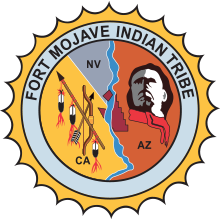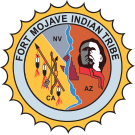Overview
The Tribal GIS Department was originally established with a grant from the U.S. Department of Health and Human Services Department Administration for Native Americans (ANA) as a GIS Pilot Project. The Tribal Council approved the pilot project and committed to $10,000 in matching funds with Tribal Resolution R-92-37 signed on May 9, 1992.
The Bureau of Indian Affairs (BIA) supported the grant and implementation of GIS at the Tribal level with a letter and commitment of in-kind financial support through the Indian Integrated Resource Information Program (IIRIP) dated May 12, 1992. The in-kind financial support of $52,200 included providing existing GIS databases, digitizing additional GIS layers, several stages of training including a 5-week internship at the Denver Service Center, and assistance from the Phoenix Area GIS Coordinator.
Final notice of matching grant funds from the BIA Colorado River Agency in the amount of $59,995 was received from the Agency Superintendent in April 1992.
The ANA grant began May 15, 1992 and was awarded for a three year period. Total funding was $293,351 including the BIA and Tribal matching funds.
Objectives
The GIS Department is intended to provide the Fort Mojave Indian Tribe with enabling technology to control its real estate development and natural resources. Further, the GIS Department provides the opportunity to strengthen Tribal institutional ability, support economic goals, build Tribal capacity, and provide training and employment opportunities for Tribal members. GIS puts the Tribe on the same technical footing as other agencies thereby, supporting self-sufficiency and self-determination.
The GIS Department has been in existence since 1992 and today (2012), 20 years later, has become an integral component of Tribal government.
Activities
The GIS Department has undergone a number of organizational changes and periods of inactivity over the years. Once the initial period of base data gathering and GIS implementation was complete through the Pilot Project, there was a period of simple maintenance and provision of basic data. Since 2005, however, the Department has seen renewed interest and rejuvenation. Global Positioning Systems (GPS) has provided a technological boost and filled a need for more accurate, specific, and local data. The Department staff has conducted surveys of the two Tribal villages, Mojave Beach, Mesquite Creek, and Mojave Rancho Estates. The GIS Department has conducted a GPS-based road inventory of all the roads on Reservation lands as part of the Inventory of Reservation Roads (IRR) project in conjunction with the Bureau of Indian Affairs (BIA) Colorado River Agency, Western Regional Office, and Central Office. In addition to the field inventory of the roads, attributes were added to each road segment in compliance with the BIA Road Inventory Field Data System (RIFDS) database. This effort was in support of receiving Federal road maintenance and construction monies proportionate to the actual road system on the Reservation.
In the past several years, GIS has become a more integral component of Tribal government. GIS data has been collected and provided in support of the EPA Department’s Multi-Hazard Mitigation Planning Project and their COOP/COG project. Maps of the villages and other residential subdivisions are updated periodically and provided to the Police Department and local emergency response agencies, as well as, the Housing Entity, Realty Department, and property managers. GPS and GIS were used extensively in the Raymond James Tax Credit Housing Project to establish lot boundaries, house footprints, grading and foundation elevations, and utility locations. GPS is used to provide elevation data for flood insurance applications.
The utilities in operation on the Reservation have all used the resources of the GIS Department to some extent. System level mapping has been provided to Fort Mojave Telecommunications along with a number of graphics for presentations. Complete water and wastewater system appurtenances have been collected using GPS and installed into a GIS database. This data is provided to Fort Mojave Tribal Utility Authority and is being used to manage the customer base, existing locations of features for maintenance and repair, and for on-going development of the system. Part of this effort has included GPS data capture on off-Reservation lands in Mohave Valley for the Mohave Valley Fire Department. A complete inventory of fire hydrants and associated valves has been completed with system maps provided to the fire department as an aid to funding request and during emergency response situations. A great deal of work has been conducted for Aha Macav Power Service. The GIS Department evaluated the data provided by Electrical System Contractors (ESC) out of Colorado under contract. The GIS Department conducted several topographic surveys to support engineering in pole placement for new power lines. The largest of these was the 12 miles of transmission line in Nevada that runs to Davis Dam. This project was in support of a potential pole and line modernization project planned by AMPS.
Other on-going projects include identification or establishment of rights-of-way or easements for new economic development projects, support of long-term planning in the areas of land-use and transportation, and provision of information for land and infrastructure on and adjacent to the Fort Mojave Indian Reservation.

